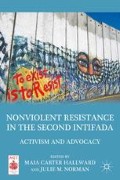Abstract
Religion is an important factor and force in resolving identity-based conflicts, yet its role has been either neglected or overemphasized in analyzing or responding to deep-rooted, intractable conflicts. Most studies have focused on how religious identity can be manipulated to trigger and sustain violence in conflicting societies. The danger of such explanations, which exaggerate the effect and role of religious forces and identity in a political setting, can be clearly seen in the cases of Iraq and Somalia, in the relations between Iran and the United States, and in Northern Ireland, where policymakers begin framing political and economic conflicts as religious or sectarian conflicts. In addition, social scientists can be affected by political agendas and policy debates regarding the role of religion in conflict. For example, Islamic theology has been presented as a root cause of the ongoing “war on terror” and thus, for these scholars, religious identity is the primary cause for war and consequently the only path for resolving the conflict. However, as social scientists, when framing the “war on terror” as a religious war, we must ask, to what extent are we serving specific and partisan political agendas rather than conducting solid social science and generating knowledge that can promote social justice? A number of other nonreligious root causes for the war on terror exist, including the distribution of resources, globalization forces, and hegemonic power policies.
Access this chapter
Tax calculation will be finalised at checkout
Purchases are for personal use only
Preview
Unable to display preview. Download preview PDF.
Notes
Scott Appleby, The Ambivalence of the Sacred: Religion, Violence, and Reconciliation (New York: Rowman and Littlefield, 1998);
Douglas Johnston and Cynthia Sampson, eds., Religion, the Missing Dimension of Statecraft (New York: Oxford University Press, 1995).
Norton Mezvinsky, “Reform Judaism and Zionism: Early History and Change,” in Anti Zionism: Analytical Reflections, ed. Roselle Tekiner, et al. (Brattleboro, V.T.: Amana Books, 1988), 313–341.
Ziad Abu-Amr, Islamic Fundamentalism in the West Bank and Gaza: Muslim Brotherhood and Islamic Jihad (Bloomington, I.N.: Indiana University Press, 1994).
Marc Gopin, Between Eden and Armageddon: The Future of World Religions, Violence, and Peacemaking (New York: Oxford University Press, 2000); Yehezkel Landau, Healing the Holy Land: Religious Peacebuilding in Palestine-Israel (Washington, D.C.: United States Institute of Peace).
Based on training material for a summer institute course led by Cynthia Sampson and Mohammed Abu-Nimer at Eastern Mennonite University in 1997: Religious Sources of Conflict and Peace. See also Mohammed Abu-Nimer, “The Role of Religious Peacebuilding in Traumatized Societies: From Withdrawal to Forgiveness,” in Peacebuilding in Traumatized Societies, ed. Barry Hart (Lanham, M.D.: University Press of America, 2009).
Mohammed Abu-Nimer, Amal Khoury, and Emily Welty, Unity in Diversity: Interfaith Dialogue in the Middle East (Washington, D.C.: United States Institute of Peace, 2007).
Mohammed Abu-Nimer, “Religion, Dialogue, and Non-Violent Actions in Israeli-Palestinian Conflict,” International Journal of Politics, Culture and Society 17 (2004): 491–511.
Amy Hubbard, “Understanding Majority and Minority Participation in Interracial and Interethnic Dialogue,” in Reconciliation, Justice and Coexistence, ed. Mohammed Abu-Nimer (Lanham, M.D.: Lexington Books, 2001).
Mohammed Abu-Nimer, Dialogue, Conflict Resolution, and Change: Arab-Jewish Encounters in Israel (Albany, N.Y.: State University of New York Press, 1999).
Editor information
Editors and Affiliations
Copyright information
© 2011 Maia Carter Hallward and Julie M. Norman
About this chapter
Cite this chapter
Abu-Nimer, M. (2011). Religious Leaders in the Israeli-Palestinian Conflict: From Violent Incitement to Nonviolent Resistance. In: Hallward, M.C., Norman, J.M. (eds) Nonviolent Resistance in the Second Intifada. Middle East Today. Palgrave Macmillan, New York. https://doi.org/10.1057/9780230337770_6
Download citation
DOI: https://doi.org/10.1057/9780230337770_6
Publisher Name: Palgrave Macmillan, New York
Print ISBN: 978-1-349-29735-1
Online ISBN: 978-0-230-33777-0
eBook Packages: Palgrave Political & Intern. Studies CollectionPolitical Science and International Studies (R0)

